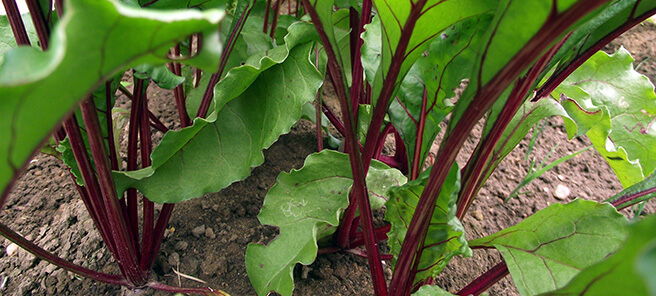Only a few years ago the majority of Australian beetroot was grown for processing. As the processing industry has declined, so has the amount of beetroot grown, although increased demand for fresh beetroot has provided some benefit. Total production is now estimated at approximately 36kt / year, with a value of up to $10-$14million. Hybrid beetroot has extended the traditional growing season by replacing industry standard open pollinated varieties.
Beetroot grows best between 18 – 25C. It is susceptible to hot temperatures, with 27C potentially causing bolting, poor colour and root shape. In particular, high temperatures can cause light and dark rings to form in the root (zoning) which is undesirable for processing. High soil temperatures also increase problems with “damping off” diseases.
The major issue with low temperatures (5C or less) is exacerbation of nutrient disorders such as boron deficiency, as well as “hollow heart” caused by calcium and boron deficiency.
Breeding to extend the upper limit for beetroot of 27C should be a priority, but it is not known whether any breeding programs are currently addressing this issue.
